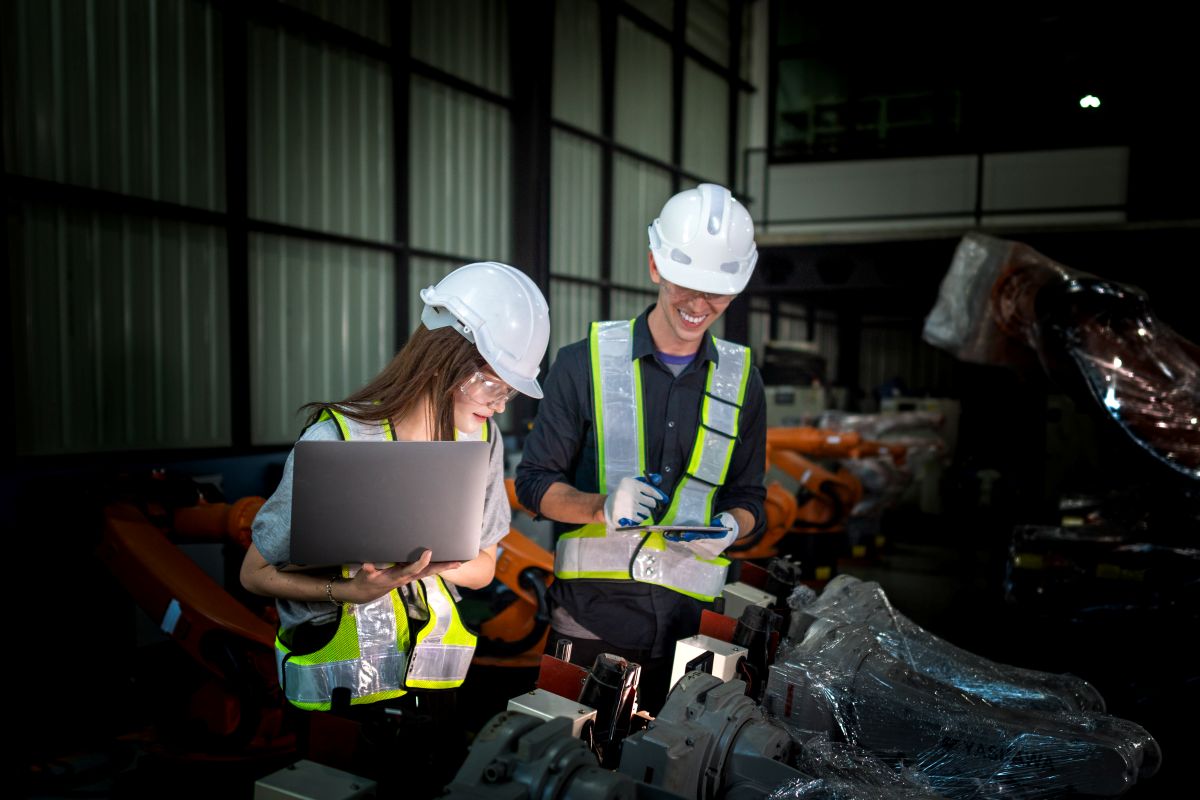
How a Video Production Firm Uses Digital Twins to Create Advanced Industrial Videos
Across industrial sectors, the integration of digital technology is redefining how information is designed, communicated, and understood. Among the most significant of these advancements is the rise of the digital twin, a virtual replica of a physical asset, system, or process that mirrors real-world conditions through live data. This technology, once limited to high-end engineering simulations, has now become a practical asset across industries such as manufacturing, energy, and logistics. For a video production firm, this evolution represents far more than an additional visual layer. Digital twins are enabling new forms of video creation that go beyond visual documentation, offering data-driven insights, predictive visualisation, and dynamic storytelling built upon live operational realities. The result is a transformation in how industrial operations can be represented, understood, and communicated through video and animation. Let’s take a closer look at how digital twins are influencing industrial video production and reshaping the creative and technical processes that underpin professional visual communication in this sector.
Visualising Complex Industrial Data Through Digital Twin Integration
Digital twins generate continuous streams of operational data, providing a detailed picture of industrial processes. For a video production firm, translating this information into video allows viewers to see actual performance rather than generic illustrations.
The types of data that can be visualised include:
- Temperature, pressure, or vibration readings from equipment
- Production throughput and operational efficiency metrics
- Predictive maintenance alerts and early-warning signals for potential failures
By integrating these elements into video, a professional production team can create content that reflects real operational conditions. This approach ensures industrial videos communicate accurate, meaningful insights while remaining visually accessible to viewers.
Filming Real and Virtual Environments in Sync
A growing trend among industrial clients is the desire to blend footage of their physical facilities with their digital twin counterparts. This creates a composite visual that aligns the tangible and virtual aspects of their operations. Achieving this requires meticulous alignment between live footage and 3D models, matching camera movement, scale, and lighting so both environments correspond accurately.
For a video production firm, this process involves synchronising filmed imagery with the geometry and visual characteristics of the digital twin. When executed correctly, it allows machinery, infrastructure, and virtual systems to appear seamlessly within the same frame. This approach not only conveys the scale of industrial sites more effectively but also demonstrates how physical and digital processes coexist. The technique is particularly valuable for illustrating digital transformation initiatives, where virtual systems operate alongside real machinery.
Streamlining Industrial Filming Through Previsualisation with Digital Twins
Industrial environments are often large, operational, and subject to strict safety controls. Digital twins are transforming how professional crews plan filming in such settings by enabling detailed previsualisation. Before arriving on-site, production teams can explore a client’s digital twin to plan optimal camera paths, lighting setups, and crew movement.
This preparation allows a video production firm to reduce disruption to daily operations, ensure compliance with safety protocols, and streamline shoot logistics. Directors and producers can identify ideal camera positions, anticipate reflections or obstructions, and even estimate light sources within the facility. The ability to rehearse production virtually results in more efficient filming schedules, minimising time spent in restricted areas and reducing operational downtime.
Enabling Real-Time Remote Collaboration and Client Review
When a facility has an established digital twin, it becomes possible for stakeholders to participate in video production remotely. Through secure cloud systems, directors, engineers, and decision-makers can review virtual representations of the site, discuss framing, and annotate features that should be included in the video.
For an industrial video production firm, this capability means creative and technical discussions can occur long before cameras are set up on-site. Adjustments can be agreed upon visually and in real time, ensuring alignment between all parties. This remote collaboration reduces travel, accelerates approval cycles, and maintains transparency throughout the project. In sectors with globally distributed teams, it represents a major advancement in production efficiency and communication accuracy.
Creating Immersive Training and Safety Videos Based on Digital Twins
Training and safety videos benefit greatly when the exact geometry and operational logic of a facility are replicated. Digital twins provide the foundation for this level of specificity.
Scenarios that can be effectively visualised include:
- Emergency evacuation procedures tailored to the specific facility layout
- Equipment operation and maintenance walkthroughs reflecting real conditions
- Hazard identification and response drills that simulate actual workplace risks
Using this approach, a video production firm can produce immersive content that enhances understanding and retention for employees, while closely reflecting the realities of the industrial environment.
Automating Content Updates as Facilities Evolve
Because digital twins are updated continuously as facilities expand or reconfigure, the visual assets linked to them can also evolve. This means that once a video is created based on the twin, future modifications to the site can be reflected automatically without requiring complete reshoots.
A video production firm can design content frameworks that reference variable data or visual elements within the twin. When the digital twin updates, whether through a new machine installation or layout adjustment, the corresponding visuals in the video can be revised efficiently. This ongoing synchronisation ensures that clients maintain accurate and up-to-date visual communication, an especially valuable feature for industries where operational change is constant.
Enhancing Virtual Production and Simulation-Based Storytelling
Virtual production technologies are redefining how industrial environments are filmed. By integrating a digital twin within a controlled studio setting, professional teams can film scenes that replicate an industrial facility without entering the physical site. This is particularly beneficial when locations are hazardous, geographically distant, or confidential.
A video production firm can reproduce the environment using LED displays or virtual sets, synchronising camera movements and lighting conditions to match the digital twin. This enables consistent visual quality while maintaining safety and confidentiality. It also allows multiple filming sessions without the logistical complexity of accessing live industrial sites, offering greater flexibility in post-production and version control.
Supporting Predictive Maintenance and Lifecycle Communication
Digital twins offer predictive insights, illustrating how equipment may perform or degrade over time. Videos created from these insights can make abstract projections more tangible.
Key visual representations include:
- Animated sequences showing component wear and lifecycle progression
- Forecasted maintenance schedules and service interventions
- Operational efficiency and cost avoidance projections based on predicted performance
Incorporating these elements allows a video production firm to produce videos that not only depict current operations but also help stakeholders understand future outcomes and plan accordingly.
Documenting Digital Transformation for Stakeholder Communication
Many organisations are using digital twins as part of their digital transformation strategies. Video production plays an essential role in documenting this evolution, combining interviews, real-world footage, and twin-based visualisations to present the progression of modernisation efforts.
For an experienced video production firm, these projects often serve to communicate long-term value to employees, investors, and partners. They provide a structured narrative that connects technological change to measurable outcomes, such as reduced downtime, improved efficiency, or better safety performance. When combined with precise visuals from digital twins, these productions become accurate historical records of transformation and innovation across industrial operations.
Digital Twins and the Future of Industrial Visual Communication
The integration of digital twins into video production represents a significant advancement in how industrial operations are portrayed and understood. From visualising live operational data to supporting predictive maintenance and transformation narratives, this technology provides accuracy and continuity that were previously difficult to achieve.
For any video production firm working with industrial or technical clients, digital twins have moved beyond a novelty to become a vital component in the creation of factual, data-rich content. As more industries invest in connected infrastructure, the demand for this form of video production is likely to grow, offering new ways to present, explain, and future-proof visual communication across sectors.
Discover how digital twin integration can elevate industrial video content with Sound Idea Digital. Speak to the team today to explore practical solutions for accurate and insightful visual communication.
We are a full-service Web Development and Content Production Agency in Gauteng specialising in Video Production, Animation, eLearning Content Development, Learning Management Systems, and Content Production.
Contact us for a quote. | enquiries@soundidea.co.za | https://www.soundideavideoproduction.co.za| +27 82 491 5824 |

